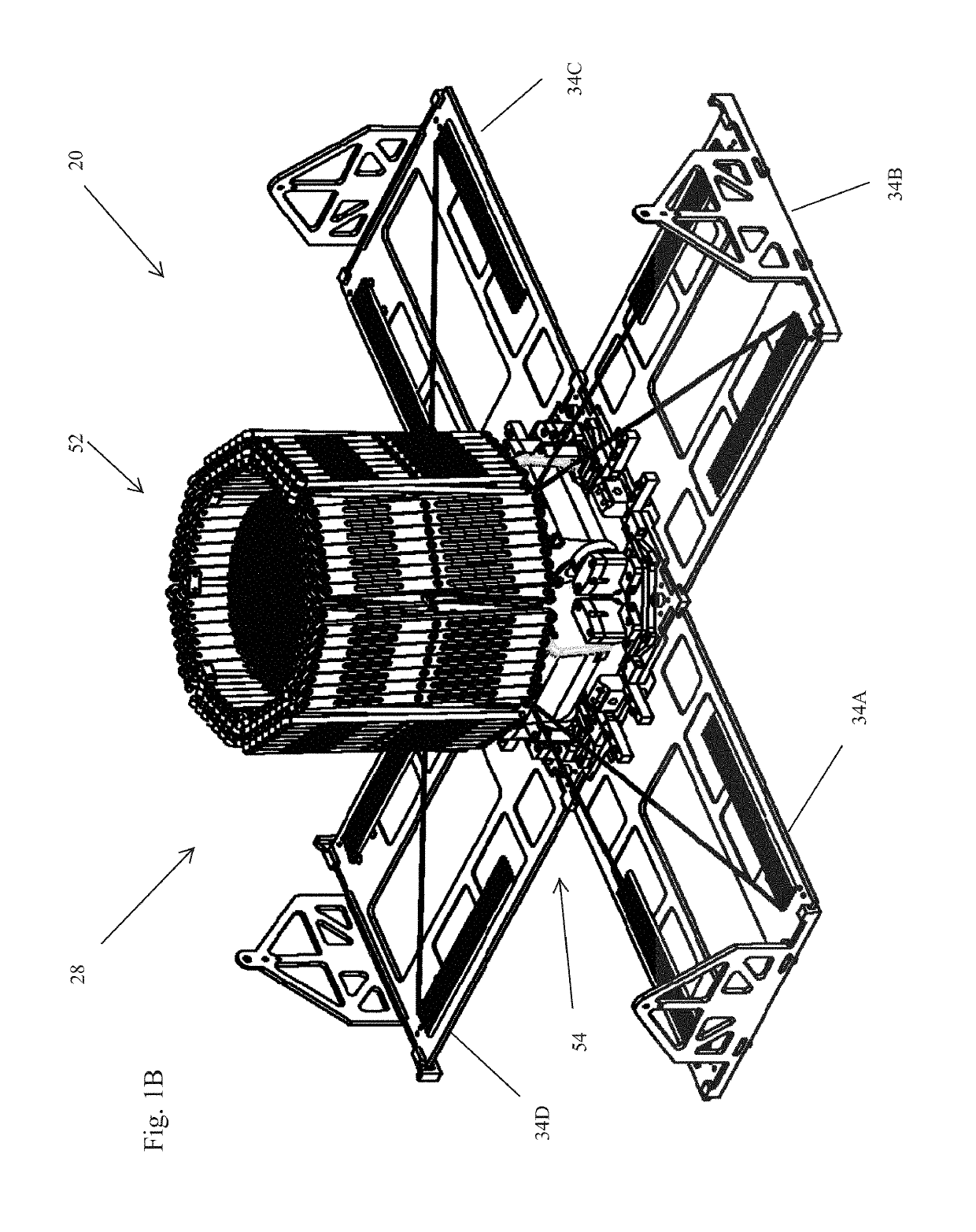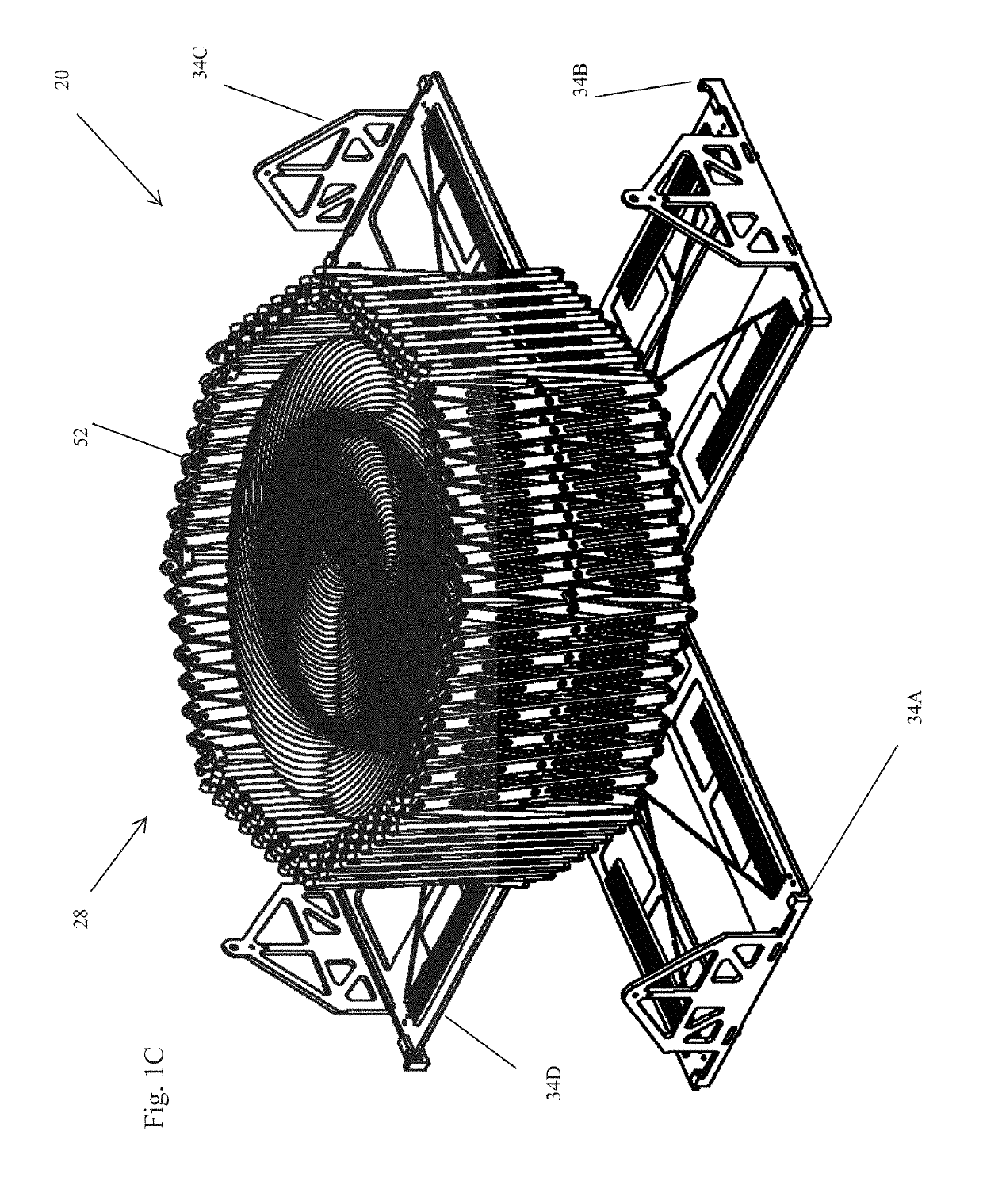Deployable structure for use in establishing a reflectarray antenna
a technology of deployable structure and reflector, which is applied in the field of deployable structure, can solve the problems of difficult to understand the deployment kinematics and reliability challenges, and the phased-array antenna typically requires a complicated and/or expensive feed network and amplifier structure, and achieves the effect of convenient tape deployment and convenient positioning of the deployed reflector
- Summary
- Abstract
- Description
- Claims
- Application Information
AI Technical Summary
Benefits of technology
Problems solved by technology
Method used
Image
Examples
Embodiment Construction
[0031]With reference to FIGS. 1A-1F, an embodiment of a deployable structure 20 for use in establishing a reflectarray antenna (hereinafter referred to as “the deployable structure 20”) is described. The deployable structure 20 conforms to a design specification which requires the deployable structure 20, in the undeployed state, to fit within a volume that is 20 cm×20 cm×25 cm. Additionally, the deployable structure 20 is required to have a mass of no more than 4 kg. Although the deployable structure 20 conforms to the design specification, it should be appreciated that adaptation to other form factors and mass requirements is feasible.
[0032]Generally, the deployable structure 20 includes a canister 22, a feed antenna 24, a flexible reflectarray 26, and a deployment mechanism 28.
[0033]With reference to FIGS. 1A-1E, the canister 22 serves to store the feed antenna 24, flexible reflectarray 26, and the deployment mechanism 28 in an undeployed state and provides a base for supporting ...
PUM
 Login to View More
Login to View More Abstract
Description
Claims
Application Information
 Login to View More
Login to View More - R&D
- Intellectual Property
- Life Sciences
- Materials
- Tech Scout
- Unparalleled Data Quality
- Higher Quality Content
- 60% Fewer Hallucinations
Browse by: Latest US Patents, China's latest patents, Technical Efficacy Thesaurus, Application Domain, Technology Topic, Popular Technical Reports.
© 2025 PatSnap. All rights reserved.Legal|Privacy policy|Modern Slavery Act Transparency Statement|Sitemap|About US| Contact US: help@patsnap.com



